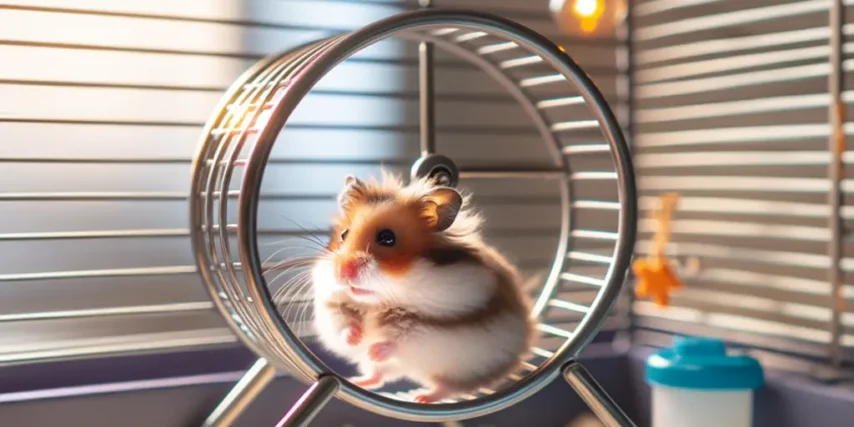The Endless Spin: Understanding the Fascinating Phenomenon of Hamster Wheel Activity
The sight of a hamster tirelessly spinning in its wheel is a common yet captivating spectacle for pet owners and enthusiasts alike. The repetitive motion raises an intriguing question: Why does the hamster keep spinning in the wheel? Beyond the surface-level amusement, there lies a complex interplay of biology, behavior, and environment that contributes to this seemingly endless activity. In this article, we will delve into the various factors that drive hamsters to engage in this behavior, shedding light on the physiological and psychological aspects of their wheel-running antics.
- Instinctual Behavior:
Hamsters are crepuscular creatures, meaning they are most active during the dawn and dusk hours. In the wild, these small rodents cover vast distances in search of food, often running several miles each night. This natural instinct to explore and cover ground has been carried into their domesticated lives. The hamster wheel provides an outlet for this innate desire to run and roam, simulating the kind of physical activity they would engage in within their natural habitats.

- Exercise and Energy Release:
Hamsters, like all living beings, require regular exercise to maintain their physical well-being. The wheel serves as a miniature treadmill, allowing them to engage in cardiovascular exercise that helps in maintaining a healthy weight and promoting overall fitness. The continuous spinning action also aids in the release of excess energy, reducing the likelihood of boredom-related behaviors or stress.

- Mental Stimulation:
Beyond the physical benefits, hamsters derive mental stimulation from wheel-running. These small rodents are intelligent creatures with a need for mental engagement. The wheel provides an opportunity for them to focus their energy on a repetitive yet purposeful task, preventing boredom and promoting mental well-being. In a controlled environment, a hamster’s mental health is just as crucial as its physical health, and the wheel serves as a simple yet effective tool for achieving this balance.
- Territorial Marking and Scent Recognition:
Hamsters are territorial animals that use scent to mark their territory. The action of running in the wheel creates friction, and as a result, the hamster’s scent is spread onto the wheel itself. This scent-marking behavior is a way for hamsters to establish ownership of their surroundings, signaling to other hamsters that this territory is already claimed. It also serves as a form of communication, helping them navigate and recognize their own territory.
- Stress Relief:
Hamsters can experience stress in various situations, such as changes in their environment, the presence of predators (even if perceived through the scent of other animals), or disruptions in their routine. Engaging in wheel-running provides an outlet for stress relief, allowing them to channel their anxiety or excess energy into a repetitive and rhythmic activity. This, in turn, contributes to their overall emotional well-being.
- Environmental Factors:
The setup and environment in which a hamster lives play a significant role in its wheel-running behavior. A well-designed cage with ample space, comfortable bedding, and proper accessories can enhance a hamster’s quality of life and encourage more active behaviors. On the other hand, a cramped or barren environment may lead to increased reliance on the wheel for both physical and mental stimulation.

In conclusion, the hamster’s tendency to spin endlessly in its wheel is a multifaceted behavior driven by a combination of instinct, exercise needs, mental stimulation, territorial marking, stress relief, and environmental factors. Recognizing and understanding these aspects of hamster behavior is crucial for providing optimal care and ensuring the well-being of these delightful pets.
As a pet owner, observing and appreciating the significance of the hamster wheel goes beyond mere entertainment; it offers valuable insights into the physical and psychological needs of these small but remarkable creatures. Embracing this understanding fosters a deeper connection between human and hamster, enriching the shared experience of domesticated companionship. So, the next time you catch your hamster in the midst of an endless spin, appreciate the intricate dance of nature and nurture that unfolds within the confined circles of its tiny wheel.







